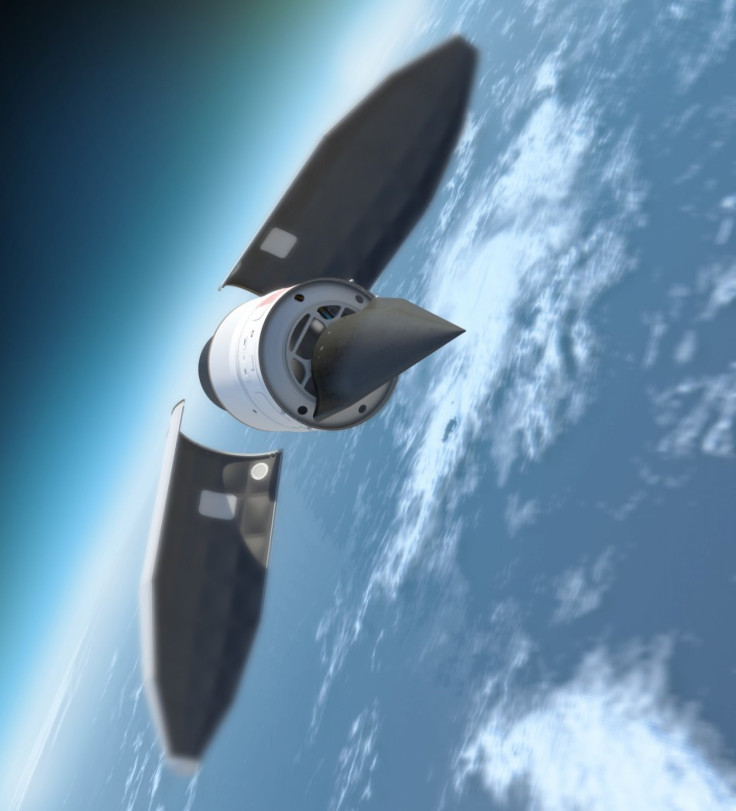Falcon HTV-2 Supersonic Aircraft Hits Pacific Ocean

The Falcon Hypersonic Technology Vehicle 2 (HTV-2) -- an unmanned rocket dubbed the fastest aircraft ever built -- crashed itself into the Pacific ocean Thursday afternoon. While traveling at Mach 20 (20 times the speed of sound), the Lockheed Martin designed aircraft fell after it stopped sending signals back to the Pentagon's Defense Advanced Research Projects Agency nine minutes into the flight.
This was the second, and last planned, test flight for the HTV-2. The first test, in April, 2010, also ended in a splash down after nine minutes.
"Here's what we know," DARPA HTV-2 program manager Major Chris Schulz said in a statement. "We know how to boost the aircraft to near space. We know how to insert the aircraft into atmospheric hypersonic flight."
"We do not yet know how to achieve the desired control during the aerodynamic phase of flight. It's vexing; I'm confident there is a solution. We have to find it."
The speed technology has a number of implications. According to DARPA, a vehicle moving at Mach 20 -- or 13,000 miles per hour -- could travel from any two points on Earth in an hour. A flight from New York to Los Angeles, for example, would take 12 minutes.
The craft also demonstrates how a missile could be able to hit any designated target in no time. The craft is launched high into the atmosphere inside a Minotaur IV rocker, and then glides back to Earth using stabilizers.
The project was started in 2003, and has cost a total of $320 million, according to Bloomberg.
© Copyright IBTimes 2024. All rights reserved.











